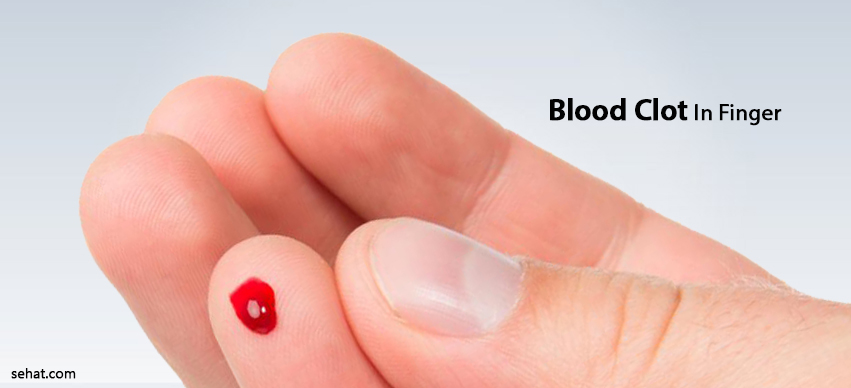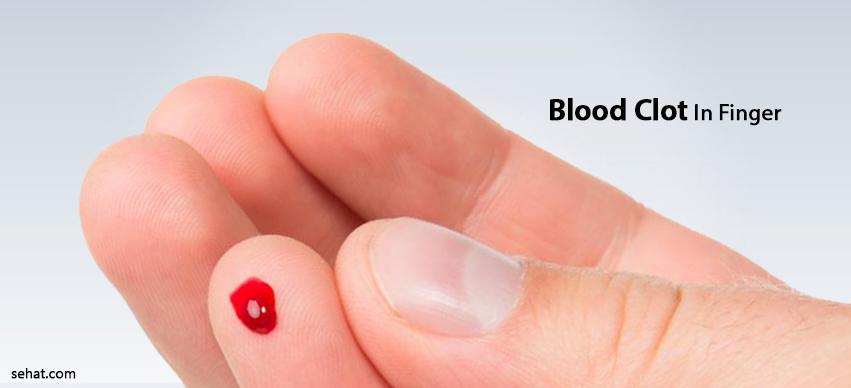Evolution of Prescription Refills: From In-Person to Online ..
6 Min Read


Whenever we are injured, blood clot formation occurs to prevent blood loss and closes the wound. Blood clotting is favorable in such cases. It becomes abnormal when it occurs within the blood vessel or within the tissue space itself.
Normal clotting of blood depends upon several factors present in the blood like;
This article will help you understand about causes, signs, and symptoms of blood clot in fingers, how to get rid of blood clot on finger and when to see a doctor for a finger blood clot.
Some of the leading causes for blood clots in fingers are;
Direct trauma to the finger is the commonest cause for the formation of blood clot in fingers. Some injuries of the fingers may be;
Certain cardiac conditions live cardiomegaly, cardiac failure, and arrhythmias impair the flow of blood to the periphery like the fingers and toes.
Infection is the most common cause of blood clot in finger. Bacterial infection of the fingers may lead to the formation of pustules, ulcerations, and inflammation of the blood vessels called vasculitis.
Cholesterol crystal embolism is one such disorder of cholesterol metabolism in which small blood vessels of fingers are occluded by the deposition of cholesterol crystals.
The clotting mechanism in our blood depends upon 12 clotting factors. In rare cases, abnormality in any one of the clotting factors may lead to a dysfunction in the entire clotting mechanism.
This is a disorder of red blood cell proliferation in which red blood cells are produced in excess. This can cause blood clots to form within the blood vessels due to increased viscosity of blood.
These disorders often result in vasculitis as well as blood clots in fingers by causing ulceration of the toes and fingers. Wegener’s granulomatosis, antiphospholipid syndrome, and systemic sclerosis.
Some common physical factors which may cause blood clots to form in fingers and toes is frostbite. Frostbite causes blood to accumulate in fingers and toes.
Some additional risk factors for developing a blood clot in fingers are;
Signs and symptoms of having a blood clot in fingers include;
Blood clot in finger generally occurs due to damage to a blood vessel. Depending upon the underlying cause, the blood clot in the finger may be a superficial one or deep.
Sometimes a blood clot may also occur beneath the fingernail called a subungual hematoma. This painful blood clot occurs as a result of injury to the nail.
A blood clot in finger is often confused for a bruise. A bruise is a noticeable blue-black discoloration which eventually resolves; while, a blood clot in finger looks like a small painful bump that may be bluish in color formed in the deeper layer of the tissues.
A blood clot in the finger may be small which may not require any treatment and may go away on its own. A bigger blood clot can potentially obstruct the flow of blood and oxygen to the surrounding tissues. When the blood flow is blocked, the tissue begins to damage resulting in cell death.
A blood clot in fingers may become dangerous as it may dislodge and travel to other important organs of the body resulting in the following life-threatening conditions;
Treatment of blood clots in fingers depends upon the underlying cause for the same. Maximum cases of a blood clot in finger can be managed conservatively. It can be treated at home in the following ways;
Additionally, your doctor may prescribe you medicines to reduce the swelling and pain. If the blood clot in the finger is bigger and more painful, then it may have to be removed surgically.
Small clots usually resolve by themselves without any specific treatment. Yet, it is important to see the doctor if you notice any of the above-mentioned signs or symptoms.
You need to see a doctor in presence of any of the below-mentioned signs and symptoms;
Although this article has given you a brief overview of how to get rid of a blood clot in fingers, it is equally important to take note of how even a simple blood clot can lead to some serious emergency medical conditions.